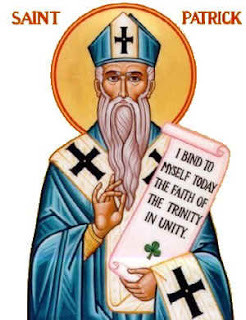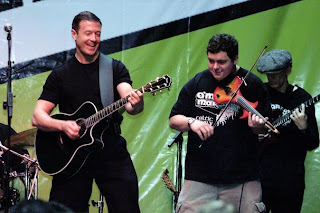 |
| John Quincy Adams (image circa 1840), not a happy-looking man. Obama, don’t be like him !!! |
Links to this entire series:
Of the 44 US presidents starting with George Washington, only eight have the sad distinction of being elected, serving four years, then being kicked out by voters. Two others failed to be re-nominated and one more wisely chose not to re-apply.
These eleven are a Pantheon of Losers, the disappointing one-termers, whose administrations should be a must-read object lesson for Barack Obama to study and avoid like small-pox if he hopes to win a second term in 2012.
Don’t get me wrong. Some of these were fine people who did lots of swell, admirable things. Some rank high in presidential polls, praised for wonderful honesty and rock-solid integrity, though mostly just “E for effort” on achieving their high-minded goals. For these eleven, the voters spoke clearly. “You’re fired.”
The three most recent (Herbert Hoover, Jimmy Carter, and George H.W. Bush) hold the closest lessons for Barack Obama, and I’ll talk about them in the next few days.
For now, here’s my quick take on the first eight, the ones who served before 1913. Yes, America was different back then, so direct comparisons are unfair. Still, some lessons of politics speak through the ages. With that caveat, here goes:
(Sorry in advance for the cryptic tone. And of course, if you disagree with my bad-mouthing of any of these fine fellows, please comment. This is the Internet. Haggling over politics — even very old politics –– is welcome.)
Pantheon of Losers (Part 1):
Fine man, good lawyer, and revolutionary hero, but as president he gave us the Alien and Sedition Acts (closing newspapers, jailing dissenters, deporting immigrants), a foul temper, and a defensive demeanor. He avoided war with France but inflicted paranoia on the country. Described as irritable and nasty, he considered himself above politics. Thomas Jefferson beat him in 1800 in America’s first negative campaign. Adams made fine material for a terrific David McCullough biography and a just-as-terrific HBO miniseries, but voters knew better and gave him the first-ever Presidential pink slip. (C-SPAN 2009 poll rank: 17)
- John Quincy Adams (1825-1829):
Another fine man, eldest son of the first Adams (above). Before being president, he conceived the Monroe Doctrine. After being president, he became a pioneer abolitionist and hero of the 1841 Amistad anti-slavery case. But as president, good grief! He never escaped Andrew Jackson’s labeling of his contested election (decided in the US House after Jackson won more popular and electoral votes) as a “corrupt bargain.” Honest but frosty, Adams believed in “internal improvements,” but his biggest legislative accomplishment was a tariff bill so draconian and slanted toward New England that Southerners called it the “tariff of Abominations,” leading South Carolina to threaten nullification. Andrew Jackson beat him easily in 1828. Like his father, JQ Adams seemed to see himself as above politics. Very big mistake. (C-SPAN 2009 poll rank: 19)
- Martin Van Buren (1837-1841):
Van Buren served as Andrew Jackson’s vice president and followed him directly in office. But unfortunately, Jackson left the country’s economy in shambles after his war against the United States Bank. The Panic of 1837 brought things crashing down. Van Buren took the fall. A master back-room politico (the “Little Magician’), he lacked a personal touch. Add a penchant for personal comforts and a shade-too-clever manner (he opposed admitting Texas as a slave state, but supported deporting Indians to the west), and voters had enough. (C-SPAN 2009 poll rank: 31)
- Franklin Pierce (1853-1857):
Handsome and heroic in the Mexican War, as president he gave us the 1854 Kansas-Nebraska Act, which allowed slavery to expand into formerly-free territories based on votes of local white settlers. This led directly to two result. One was Blooding Kansas, with an estimated 200 people murdered in skirmishes and massacres by pro- and anti-slavery factions. (Click here for more on this.) The second was Abraham Lincoln, then a former-congressman practicing law in down-state Illinois, who was so outraged by the law that he decided to re-enter politics. Harry Truman put it this way. Noticing Pierce’s swell-looking portrait hanging in the White House at one point, he said: “being president involves a little bit more than just winning a beauty contest… Pierce didn’t know what was gong on, and if he did, he wouldn’t of known what to do about it.” (C-SPAN 2009 poll rank: 40)
- James Buchanan (1857-1861):
The Civil War. Need I say more? No, it wasn’t all his fault, but, as they say, the union breakup happened on his watch. By the time he handed the keys to Abe Lincoln, the country was split in two. Not only did Buchanan fail to confront the careening tensions over slavery during his term, but he also presided over Wall Street’s Panic of 1857 and a major corruption scandal. On paper, he was one of the best qualified people ever elected president: a former Congressman, Senator, Secretary of State, Minister to Russian, Minister to England, so on, so forth. But by 1860, when the secession crisis exploded, Buchanan was 69 years old, which was very old by mid-1800s standards. His Democratic Party, by 1860 hopelessly split between north and south, looked elsewhere. (C-SPAN 2009 poll rank: 42)
- Rutherford B. Hayes (1877-1881):
Another reform-minded man who considered himself above politics. Unfortunately, Hayes only reached the White House after surviving the ulgiest political mess in 19th-century US history, the contested count of 1876 — an episode eerily similar to the Bush-versus-Gore free-for-all in 2000 (hence the nick-name “RutherFRAUD”). Hayes spent whatever political chips he had left on an unsuccessful quest for Civil Service Reform — an idea popular with intellectuals but detested by most of the politicos who had won Hayes his presidency. In the process, he irritated his own Party and ignored the country’s more pressing social problems — labor unrest (over 70 died after he called out Federal troops to crush the 1877 railroad strike), growing violence against freed slaves in the South, and a bad economy. Hayes decided not to seek re-election. Nobody complained. (C-SPAN 2009 poll rank: 33)
- Benjamin Harrison (1889-1893):
Harrison defeated incumbent president Grover Cleveland in 1888, then proved such a disappointment to voters that they put Cleveland back in office after four years. This made Cleveland the only US president to serve two non-contiguous terms and reduced Harrison, essentially, to the comma in between. Harrison was conscientious and serious, but Theodore Roosevelt (not known for understatement) described him as a “cold-blooded, narrow-minded, prejudiced, obstinate, timid old psalm-singing Indiana president.” Fair or not, the voters agreed with TR. (C-SPAN 2009 poll rank: 30)
- William Howard Taft (1909-1913):
Taft never really wanted to be President. His dream job was always the Supreme Court, and it showed. Taft entered the White House in 1909 with the best possible political advantage, the full support of his mentor, highly-popular outgoing president Theodore Roosevelt. Taft then took barely two years to utterly squander the bulk of this good will. He did it mostly with three things: (a) taking sides in a bitter internal Republican power struggles, and backing the arch-conservatives like House Speaker Joe Cannon (R-Ill) and Senator Nelson Aldrich (R-RI) over TR’s friends, the progressives, (b) a high-profile stink over the firing of TR’s friend and conservation hero Gifford Pinchot, and (c) being bullied into supporting an unpopular tariff bill. To his credit, Taft had some fine progressive accomplishments, but by1912 he had rendered his party badly split, with TR himself challenging him for the nomination — which Taft ultimately won. The outcome? Taft’s Republicans lost Congress in 1910 and lost the White House in 1912. Though Taft himself ultimately got his dream job as Spreme Court Chief Justice a few years later. (C-SPAN 2009 poll rank: 24)
The lesson for Obama:
History, of course, never really repeats itself. Every situation is unique. Some of the presidents I’ve talked about here lost the seats to very talented and aggressive opponents (Jefferson and Andrew Jackson, for instance), or faced terribly difficult challenges (the 1860 secession crisis or the Panic of 1837). Still, it’s hard not to notice a pattern among the losers. And here lies the lesson for Barack Obama in 2012.
The fact is, honesty, integrity, and high-minded ideals are very nice to have in a president, but the human touch in better. Politics is their profession, and they need to embrace it and be damned good at it. Call it distance, lack of people skills, coldness, shyness, over-intellectualism — none of which are terribly bad character traits for most people in most lines of work — but for presidents these come across as poison: arrogance, uncaring, or weakness. They create an impression that “he thinks he’s better than us” or “he’s in over his head” or “he has no common sense.”
Add in a few policy failures, and voters won’t stand for it. Just look at the record.
Politics is personal, and being effective in the face-to-face, person-to-person sense is essential to not just to wining and keeping office, but also accomplishing any policy agenda. Even more so on TV.
Next up — Herbert Hoover. Stay tuned….





















